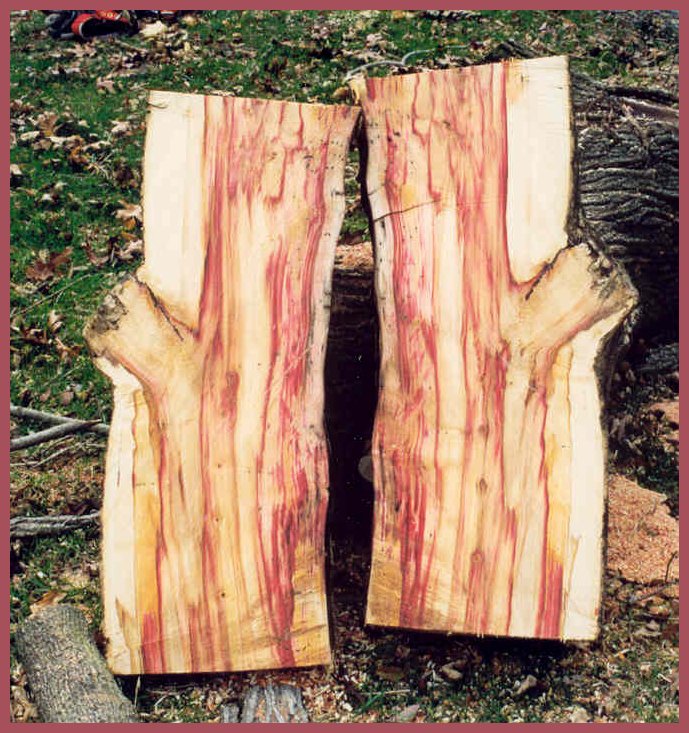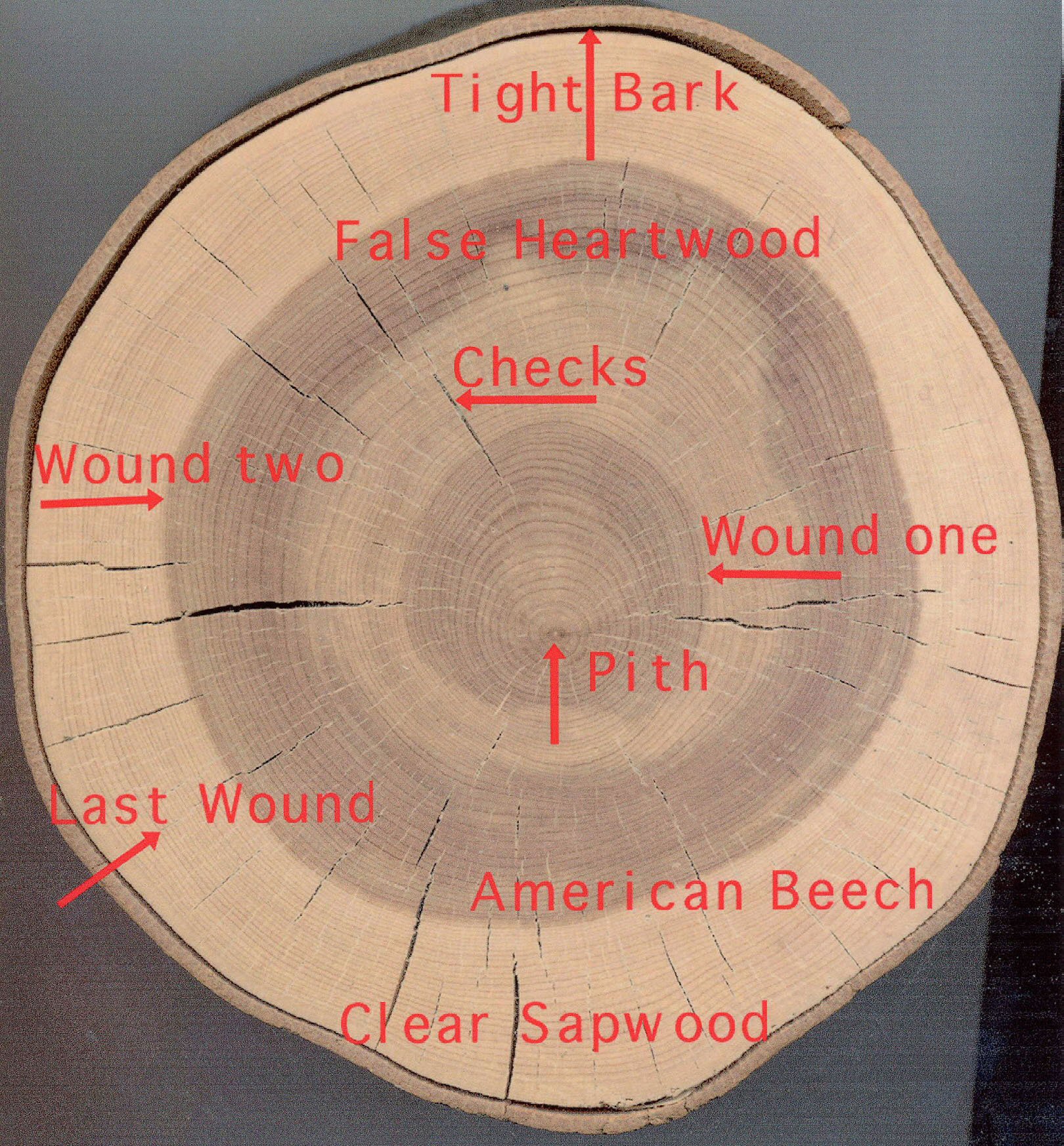

 On
this Box Elder sample you can see the color altered wood is the result of the
death of a branch and not an aging processes such as true heartwood would be.
Can you make the connection?
On
this Box Elder sample you can see the color altered wood is the result of the
death of a branch and not an aging processes such as true heartwood would be.
Can you make the connection?
Some more words on the topic -----
This is wound-initiated discoloration in the wood of box
elder. The red color is frequently found in the core of box elders and is due
to the response of the trees to injury. This response includes the rapid
oxidation and depletion of energy (in the form of starch and more-or-less simple
sugars), the oxidation of existing phenolic compounds and (perhaps) the new
formation of phenols, and death of the symplast.
The discoloration process itself is initiated by loss of hydraulic integrity
(the columns of water under tension in the xylem vessels snap) and drying. The
discoloration process, as we understand it now, can occur without infection. In
pathology lingo, it is a nonspecific response to abiotic injury. These changes
can increase the resistance of the discolored wood to the wood decay process.
The discolored wood frequently does (always?) become infected over time.
Unfortunately, the infected and uninfected discolored wood can appear as
identical. Over time, microorganisms (usually "pioneer fungi" and bacteria)
tend to degrade the protective substances produced by the tree during the
discoloration process, and the resistance to decay decreases. As the various
fungi move through the discolored wood, some will actually "bleach" the wood and
greatly lighten its color immediately before or during the breakdown of the wood
substance itself.
The role of the fungi is largely as decomposers that will decay the wood
within compartment boundaries. Some fungi may be active pathogens and push
against the boundaries and exploit breaks in the column boundaries.
Source © Conversation with Dr. Kevin Smith Plant Physiologist Northeastern Forest Experiment Station, US Forest Service in Durham.
A Beech with false heartwood

Dictionary MAIN PAGE
Text & Graphics Copyright © 2004 Keslick & Son Modern Arboriculture
Please report web site problems, comments and words of interest, not
found.
Contact
John A. Keslick, Jr.